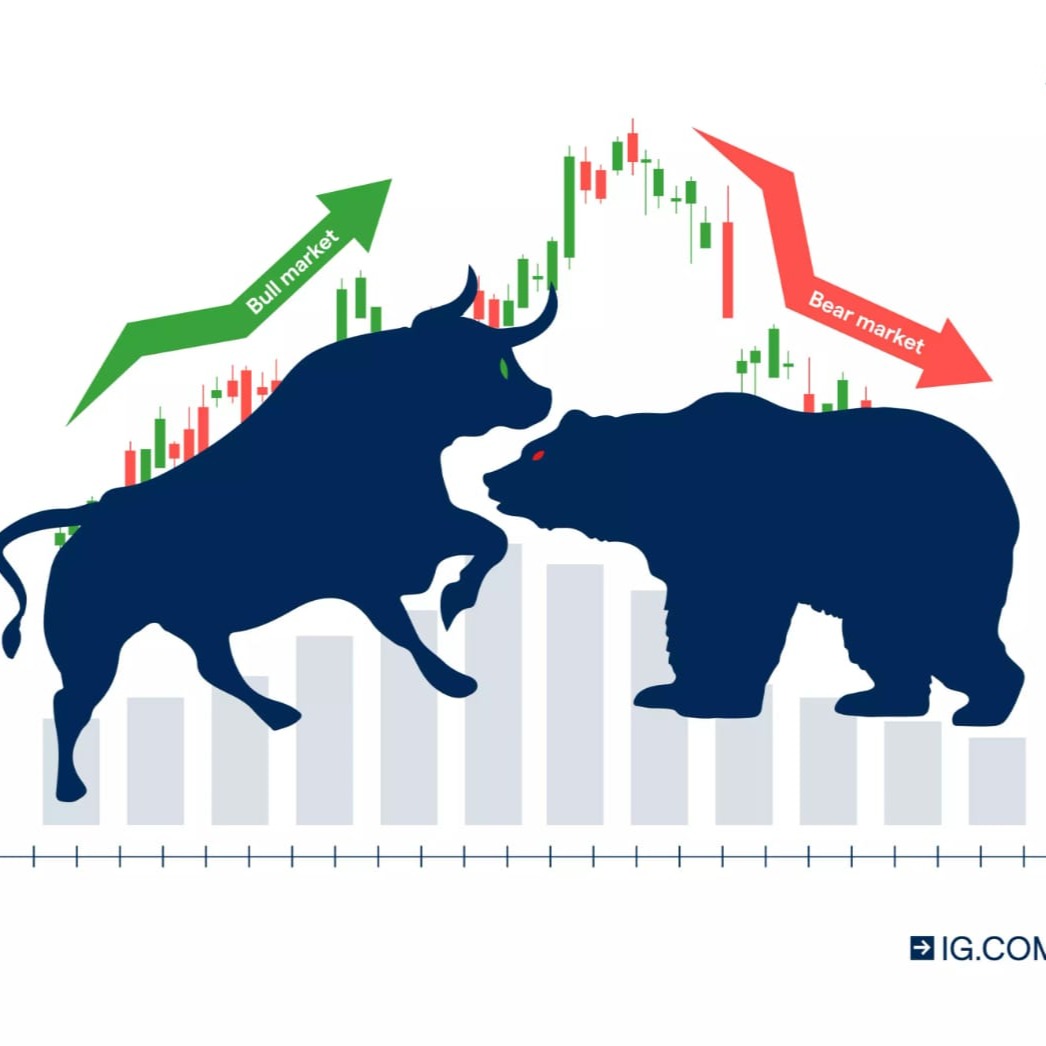
DeepBook Protocol KursDEEP
EUR
Gelistet
€0.03573EUR
-4.95%1D
Der Kurs für DeepBook Protocol (DEEP) in Euro beträgt €0.03573 EUR.
DeepBook Protocol Kurs- EUR -Live-Chart (DEEP/EUR)
Zuletzt aktualisiert 2025-12-04 21:33:09(UTC+0)
DEEP/EUR Kursrechner
DEEP
EUR
1 DEEP = 0.03573 EUR. Der aktuelle Kurs für die Konvertierung von 1 DeepBook Protocol (DEEP) in EUR beträgt 0.03573. Dieser Kurs dient nur als Referenz.
Bitget bietet die niedrigsten Transaktionsgebühren unter allen großen Trading-Plattformen. Je höher Ihre VIP-Stufe ist, desto günstiger sind die Tarife.
Live DeepBook Protocol Kurs heute in EUR
Der Live-Kurs von DeepBook Protocol beträgt heute€0.03573 EUR, bei einer aktuellen Marktkapitalisierung von €161.00M. Der Kurs von DeepBook Protocol ist in den letzten 24 Stunden um 4.95% gefallen, und das 24-Stunden-Trading-Volumen beträgt €17.05M. Der Umrechnungskurs von DEEP/EUR zu (DeepBook Protocol EUR) wird in Echtzeit aktualisiert.
Wie viel ist 1 DeepBook Protocol in Euro wert?
Derzeit liegt der Kurs für DeepBook Protocol (DEEP) bei Euro bei €0.03573 EUR. Sie können 1DEEP jetzt für €0.03573 kaufen, 279.87 DEEP können Sie jetzt für €10 kaufen. In den letzten 24 Stunden lag der höchste Kurs für DEEP bei EUR bei €0.03747 EUR und der niedrigste Kurs für DEEP bei EUR bei €0.03452 EUR.
Glauben Sie, dass der Kurs von DeepBook Protocol heute steigen oder fallen wird?
Stimmen insgesamt:
Anstieg
0
Fall
0
Die Abstimmungsdaten werden alle 24 Stunden aktualisiert. Sie spiegeln die Prognosen der Community zur Kursentwicklung von DeepBook Protocol wider und sollten nicht als Anlageberatung betrachtet werden.
DeepBook Protocol Marktinformationen
Kursentwicklung (24S)
24S
24S Tief €0.0324S Hoch €0.04
Allzeithoch (ATH):
€0.2948
Kursänderung (24S):
-4.95%
Kursänderung (7T):
-14.88%
Kursänderung (1J):
-35.29%
Markt-Rangliste:
#168
Marktkapitalisierung:
€160,997,848.44
Vollständig verwässerte Marktkapitalisierung:
€160,997,848.44
24S-Volumen:
€17,054,407.22
Tokens im Umlauf:
4.51B DEEP
Max. Angebot:
--
DeepBook Protocol Kursverlauf (EUR)
Der Kurs von DeepBook Protocol betrug im letzten Jahr -35.29%. Der höchste Kurs von DEEP in EUR im letzten Jahr betrug €0.2948 und der niedrigste Kurs von DEEP in EUR im letzten Jahr betrug €0.02940.
ZeitKursänderung (%) Niedrigster Kurs
Niedrigster Kurs Höchster Kurs
Höchster Kurs 
 Niedrigster Kurs
Niedrigster Kurs Höchster Kurs
Höchster Kurs 
24h-4.95%€0.03452€0.03747
7d-14.88%€0.02940€0.04118
30d-31.55%€0.02940€0.06199
90d-68.92%€0.02940€0.1305
1y-35.29%€0.02940€0.2948
Allzeit-35.66%€0.009223(2024-10-14, 1 Jahr(e) her)€0.2948(2025-01-19, 320 Tag(e) her)
Was ist der höchste Kurs von DeepBook Protocol?
Der DEEP Allzeithöchststand (ATH) in EUR lag bei €0.2948, wie auf 2025-01-19 zu sehen ist. Im Vergleich zum DeepBook Protocol ATH ist der aktuelle Kurs von DeepBook Protocol um 87.88% gesunken.
Was ist der niedrigste Kurs von DeepBook Protocol?
Der DEEP Allzeittiefststand (ATL) in EUR lag bei €0.009223, wie auf 2024-10-14 zu sehen ist. Im Vergleich zum DeepBook Protocol ATL ist der aktuelle Kurs von DeepBook Protocol um 287.40% gestiegen.
DeepBook Protocol Kursprognose
Wann ist ein guter Zeitpunkt, um DEEP zu kaufen? Sollte ich DEEP jetzt kaufen oder verkaufen?
Bei der Entscheidung, ob Sie DEEP kaufen oder verkaufen sollen, müssen Sie zunächst Ihre eigene Handelsstrategie berücksichtigen. Die Handelsaktivitäten von Langzeit- und Kurzzeit-Tradern werden ebenfalls unterschiedlich sein. Der Bitget DEEP technische Analyse kann Ihnen eine Referenz fürs Traden bieten.
Gemäß der DEEP 4S Technische Analyse ist das Trading-Signal Verkauf.
Gemäß der DEEP 1T Technische Analyse ist das Trading-Signal Verkauf.
Gemäß der DEEP 1W Technische Analyse ist das Trading-Signal Verkauf.
Wie hoch wird der Kurs von DEEP in 2026 sein?
In 2026 wird auf der Grundlage einer prognostizierten jährlichen Wachstumsrate von +5 % erwartet, dass der Kurs von DeepBook Protocol(DEEP) €0.03906 erreichen wird; auf der Grundlage des für dieses Jahr prognostizierten Kurses wird die kumulative Kapitalrendite einer Investition in DeepBook Protocol bis zum Ende von 2026 +5% erreichen. Weitere Informationen finden Sie unter DeepBook Protocol Kursprognosen für 2025, 2026, 2030–2050.Wie hoch wird der Kurs von DEEP im Jahr 2030 sein?
Im Jahr 2030 wird der Kurs von DeepBook Protocol(DEEP) auf der Grundlage einer prognostizierten jährlichen Wachstumsrate von +5 % voraussichtlich €0.04748 erreichen; auf der Grundlage des für dieses Jahr prognostizierten Kurses wird die kumulierte Kapitalrendite einer Investition in DeepBook Protocol bis Ende 2030 27.63% erreichen. Weitere Informationen finden Sie unter DeepBook Protocol Kursprognosen für 2025, 2026, 2030–2050.
Trendige Aktionen
Globale DeepBook Protocol Kurse
Wie viel ist DeepBook Protocol im Moment in anderen Währungen wert? Zuletzt aktualisiert: 2025-12-04 21:33:09(UTC+0)
DEEP zu ARS
Argentine Peso
ARS$60.21DEEP zu CNYChinese Yuan
¥0.29DEEP zu RUBRussian Ruble
₽3.16DEEP zu USDUnited States Dollar
$0.04DEEP zu EUREuro
€0.04DEEP zu CADCanadian Dollar
C$0.06DEEP zu PKRPakistani Rupee
₨11.68DEEP zu SARSaudi Riyal
ر.س0.16DEEP zu INRIndian Rupee
₹3.74DEEP zu JPYJapanese Yen
¥6.45DEEP zu GBPBritish Pound Sterling
£0.03DEEP zu BRLBrazilian Real
R$0.22Wie man DeepBook Protocol(DEEP) kauft

Erstellen Sie Ihr kostenloses Bitget-Konto
Melden Sie sich bei Bitget mit Ihrer E-Mail-Adresse/Handynummer an und erstellen Sie ein sicheres Passwort, um Ihr Konto zu schützen.

Verifizieren Sie Ihr Konto
Verifizieren Sie Ihre Identität, indem Sie Ihre persönlichen Daten eingeben und einen gültigen Lichtbildausweis hochladen.

DEEP in EUR konvertieren
Wählen Sie eine der Kryptowährungen für das Trading auf Bitget.
FAQ
Was ist der aktuelle Kurs von DeepBook Protocol?
Der Live-Kurs von DeepBook Protocol ist €0.04 pro (DEEP/EUR) mit einer aktuellen Marktkapitalisierung von €160,997,848.44 EUR. Der Wert von DeepBook Protocol unterliegt aufgrund der kontinuierlichen 24/7-Aktivität auf dem Kryptomarkt häufigen Schwankungen. Der aktuelle Kurs von DeepBook Protocol in Echtzeit und seine historischen Daten sind auf Bitget verfügbar.
Wie hoch ist das 24-Stunden-Trading-Volumen von DeepBook Protocol?
In den letzten 24 Stunden beträgt das Trading-Volumen von DeepBook Protocol €17.05M.
Was ist das Allzeithoch von DeepBook Protocol?
Das Allzeithoch von DeepBook Protocol ist €0.2948. Dieses Allzeithoch ist der höchste Kurs für DeepBook Protocol seit seiner Einführung.
Kann ich DeepBook Protocol auf Bitget kaufen?
Ja, DeepBook Protocol ist derzeit in der zentralen Börse von Bitget verfügbar. Ausführlichere Anweisungen finden Sie in unserem hilfreichen Wie man deepbook-protocol kauft Leitfaden.
Kann ich mit Investitionen in DeepBook Protocol ein regelmäßiges Einkommen erzielen?
Natürlich bietet Bitget einen strategische Trading-Plattform, mit intelligenten Trading-Bots, um Ihre Trades zu automatisieren und Gewinne zu erzielen.
Wo kann ich DeepBook Protocol mit der niedrigsten Gebühr kaufen?
Wir freuen uns, ankündigen zu können, dass strategische Trading-Plattform jetzt auf der Bitget-Börse verfügbar ist. Bitget bietet branchenführende Handelsgebühren und -tiefe, um profitable Investitionen für Trader zu gewährleisten.
Kurse ähnlicher Kryptowährungen
Kaspa Kurs (EUR)dogwifhat Kurs (EUR)Worldcoin Kurs (EUR)Ethereum Kurs (EUR)OFFICIAL TRUMP Kurs (EUR)XRP Kurs (EUR)Stellar Kurs (EUR)Solana Kurs (EUR)WINkLink Kurs (EUR)Litecoin Kurs (EUR)Bitcoin Kurs (EUR)Fartcoin Kurs (EUR)Pi Kurs (EUR)Toncoin Kurs (EUR)Bonk Kurs (EUR)Cardano Kurs (EUR)Pepe Kurs (EUR)Dogecoin Kurs (EUR)Shiba Inu Kurs (EUR)Terra Kurs (EUR)
Wo kann ich DeepBook Protocol (DEEP) kaufen?
Videobereich - schnelle Verifizierung, schnelles Trading

Wie Sie die Identitätsverifizierung auf Bitget durchführen und sich vor Betrug schützen
1. Loggen Sie sich bei Ihrem Bitget-Konto ein.
2. Wenn Sie neu bei Bitget sind, schauen Sie sich unser Tutorial an, wie Sie ein Konto erstellen.
3. Bewegen Sie den Mauszeiger über Ihr Profilsymbol, klicken Sie auf "Unverifiziert" und dann auf "Verifizieren".
4. Wählen Sie Ihr Ausstellungsland oder Ihre Region und den Ausweistyp und folgen Sie den Anweisungen.
5. Wählen Sie je nach Präferenz "Mobile Verifizierung" oder "PC".
6. Geben Sie Ihre Daten ein, legen Sie eine Kopie Ihres Ausweises vor und machen Sie ein Selfie.
7. Reichen Sie Ihren Antrag ein, und voilà, Sie haben die Identitätsverifizierung abgeschlossen!
Kaufen Sie DeepBook Protocol für 1 EUR
Ein Willkommenspaket im Wert von 6.200 USDT für neue Bitget-Nutzer!
Jetzt DeepBook Protocol kaufen
Investitionen in Kryptowährungen – einschließlich des Online-Kaufs von DeepBook Protocol über Bitget – unterliegen Marktrisiken.
Bitget bietet Ihnen einfache und bequeme Möglichkeiten zum Kauf von DeepBook Protocol und bemüht sich, unsere Nutzer umfassend über jede auf der Plattform angebotene Kryptowährung zu informieren. Wir übernehmen jedoch keine Verantwortung für etwaige Ergebnisse, die sich aus dem Kauf von DeepBook Protocol ergeben können. Diese Seite und die darin enthaltenen Informationen stellen keine Empfehlung oder Befürwortung einer bestimmten Kryptowährung dar. Alle Kursangaben und sonstigen Informationen auf dieser Seite stammen aus öffentlich zugänglichen Quellen im Internet und stellen kein Angebot seitens Bitget dar.
DEEP/EUR Kursrechner
DEEP
EUR
1 DEEP = 0.03573 EUR. Der aktuelle Kurs für die Konvertierung von 1 DeepBook Protocol (DEEP) in EUR beträgt 0.03573. Dieser Kurs dient nur als Referenz.
Bitget bietet die niedrigsten Transaktionsgebühren unter allen großen Trading-Plattformen. Je höher Ihre VIP-Stufe ist, desto günstiger sind die Tarife.
DEEP Ressourcen
DeepBook Protocol Bewertungen
4.4
Tags:
Verträge:
--
Bitget Insights

BGUSER-SNXYLE69
2025/10/02 04:50
friends
$DEEP its my opinion 1$ and 10$ 😜 so what's ur opinion ? comment now 0.12
DEEP-4.41%

ScalpingX
2025/09/29 08:33
$DEEP - Mcap 426,44M$ - 88%/ 43,4K votes Bullish
SC02 M5 - pending Long order. Entry is within HVN + not affected by any weak zone, estimated stop-loss around 1.47%. The uptrend is in the 199th cycle, advance amplitude 11.85%.
#TradingSetup #CryptoInsights
DEEP-4.41%

Jahanzaib_Gondal
2025/09/18 04:25
$ZKC: Game Time. Analyzing the New $ZKC Power on Bitget.
Subtitle: The buzzer beater has sounded. $ZKC the native token for the elite zkSync ecosystem, is now live for trading on Bitget. We break down the pre-game analysis and the potential plays ahead.
Let's get straight to the scouting report.
The Player: Who is $ZKC?
$ZKC isn't just another name on the roster. It's the utility token for zkSync Era, a top-tier Layer-2 blockchain using advanced zero-knowledge (ZK) proofs to scale Ethereum. Think of it as the fuel and the franchise player for a faster, cheaper Ethereum experience.
· Position: Utility Token / Ecosystem Driver
· Key Stats: Powers network security, pays gas fees via account abstraction, and governs the future of the zkSync protocol.
· Draft Position: Highly touted prospect with a strong technical foundation.
The Market: First Quarter Analysis
The opening minutes of a new listing are all about volatility and momentum. $ZKC is hitting the court with a few key advantages:
· Strong Bench (Ecosystem): zkSync isn't a rookie. It has a deep bench of DeFi apps, NFTs, and users already playing on its network. This isn't a build-from-scratch project.
· Crowd Hype (Demand): Launching on a major exchange like Bitget provides instant liquidity and access to a global audience of traders. Expect a high-volume opening.
· The Game Plan (Tokenomics): The token is designed to be used, not just held. Real utility creates real demand.
Key Resistance Level (The Defense to Break): $0.95 - $1.05 This is the first major test.A strong breakout above this zone on high volume could signal a run-up.
Key Support Level (The Home-Court Advantage): $0.65 - $0.75 This is the floor.Holding this level is critical for maintaining bullish momentum. A break below could see a retreat to find stronger support.
The Playbook: Price Prediction Scenarios
This is not financial advice. This is a game plan based on market mechanics.
· Bull Case (The Championship Run): If Bitcoin holds strong and the altcoin market rallies, $ZKC's unique narrative could make it a standout performer.
Short-term target: $1.50 - $2.00. This would require sustained buying pressure and overall market greed.
· Base Case (A Solid Season): The most likely scenario is consolidation after the initial listing frenzy. Price action chops between $0.80 and $1.20 as the market digests the initial supply and demand. This is healthy for long-term growth.
· Bear Case (An Off Night): If the broader crypto market sells off, all new listings are vulnerable. A break below key support could see a test of $0.50 or lower. This is a risk every trader must account for.
Final Buzzer: How to Play It
1. Watch the Volume: High volume on green candles = strong buying interest. Low volume on pumps = a potential fakeout.
2. Track BTC: If Bitcoin tanks, it's hard for any altcoin, especially a new one, to rally. Know the macro climate.
3. Manage Your Risk: This is a new, volatile asset. Size your position accordingly. Don't go all-in on the first play.
$ZKC is now live. The game is on.
BTC-1.21%
FUEL-3.46%

YASIRALICTRADER🌟
2025/09/18 03:13
📊🔥 BTC Exchange Reserves Drop to Multi-Year Lows: What It Means for Price Action
The Bitcoin market has just hit a critical milestone: exchange reserves are now at multi-year lows. This development is more than just a data point—it’s a powerful signal of shifting market dynamics, investor sentiment, and long-term price potential. For traders, institutions, and retail holders alike, this trend could reshape how Bitcoin behaves in the months ahead. Let’s dive deep into what this means. 🚀
---
✨ 📉 BTC Exchange Reserves Explained
What are Exchange Reserves?
Exchange reserves represent the total amount of Bitcoin held in wallets controlled by centralized exchanges.
Why it Matters?
When reserves drop, it typically means fewer coins are available for immediate selling, suggesting that investors are moving their BTC to cold storage for long-term holding.
---
🚀 🐂 Supply Shock in the Making?
With fewer coins on exchanges, liquidity shrinks.
A shrinking supply often leads to a supply-demand imbalance, which can trigger sharp upward movements in price when demand increases.
This pattern has historically aligned with bullish rallies, particularly when reserves hit extreme lows.
---
📊 On-Chain Data Insights
Multi-year lows in reserves reflect a trend similar to pre-bull market phases in previous cycles.
Large holders (whales) are accumulating and moving BTC to cold wallets.
Institutional-grade custodianship is on the rise, indicating growing long-term confidence.
---
⚡ Key Investor Takeaways
📉 Less BTC available to sell → Lower selling pressure.
📈 Higher probability of price appreciation as demand meets reduced supply.
🐋 Whale accumulation signals smart money positioning for the next leg up.
---
🌍 Broader Market Implications
A decline in reserves could reduce volatility in the short term, as panic selling becomes harder with fewer coins on exchanges.
Long-term, it may amplify bullish momentum if mainstream demand surges—especially with ETFs and institutional inflows accelerating.
This aligns perfectly with the “digital gold” narrative as more investors treat Bitcoin as a long-term store of value rather than a trading asset.
---
🔮 Outlook: What’s Next for BTC?
If exchange reserves continue falling, expect higher resistance to downside pressure.
Potential catalysts like ETF inflows, Fed policy shifts, and global liquidity trends could magnify the impact of low reserves.
The stage may be set for another historic BTC rally, with scarcity as the fuel and institutional adoption as the spark.
---
✅ Final Thoughts
The drop in BTC exchange reserves is not just a technical metric—it’s a macro signal. Investors are pulling Bitcoin off exchanges because they believe in its long-term potential. As reserves decline, the supply squeeze narrative strengthens, setting Bitcoin up for possible explosive price movements in the near future.
👉 In short: Low reserves = strong hands = bullish signal. 🐂🔥
---
BTC-1.21%
FUEL-3.46%

BGUSER-VSKY448K
2025/09/18 01:41
$SPON another deep dumpbin
DEEP-4.41%
Traden
Earn
Kurse neu gelisteter Coins auf Bitget








